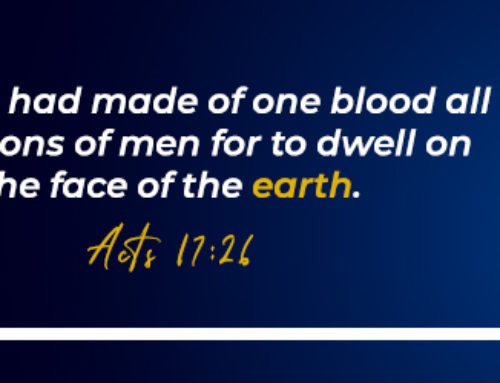It is now 500 years since the singular act of the Augustinian monk, Martin Luther, ignited what has come to be known as the Protestant Reformation. Yet, Luther was not the one who started the protest that has come to be synonymous with him and a movement that has forever changed the course of human history.
The ascension of the Roman Church to world dominance ushered in what we know today as the Dark Ages. The Psalmist David declared, “Thy word is a lamp unto my feet, and a light unto my path” (Psalm 119:105). Of primary focus of that massive European Ecclesiastical Establishment, however, was the removal of God’s word from the people. Hence, as the Light was removed, the deeper the darkness became. Intrinsically interwoven with the fabric of darkness was the thread of persecution. Anyone found to possess or to profess even a smithereen of God’s truth was subject to the cruelest, most inhumane and barbaric treatment that the human mind can conjure up. Starvation, burying alive, quartering, dismemberment of the bowels, burning at the stake were but a few of the satanic deeds employed by the Roman church to drive fear into the hearts of anyone who dared to believe in the Truth of God’s word rather than the dogmas of the church. Never before or since has the human family experienced such depths of despotism as during the reign of the Roman papacy. Famed papal historian, A.J. Wylie, characterizes its reign thus, “…the noon of the papacy was the midnight of the world…” (The History of Protestantism, b.1, ch. 4).
Despite the church’s unrelenting efforts to extinguish the Light of God’s word, the prophet’s Isaiah words,“The grass withereth, the flower fadeth: but the word of our God will stand forever” (Isaiah 40:8) continues to prove true. The Irishman Columba and his followers, under the most trying of circumstances, spread the word of a crucified and risen Savior not only throughout Scotland; but to Germany, Switzerland and Italy. Bible faith and practice existed in Armenia and Central Africa, outside the reach of the papal persecutors. The Waldensians, so often referred to as ‘the church in the wilderness’, were the bearers of the True Light amid the proliferation of papal darkness and apostasy.
Almost two hundred years before Luther, there arose in England one who had become known as the Morning Star of the Reformation. John Wycliffe was a man of fervent piety, well learned in the philosophy of his time and versed in the law of the church. But it was his study and investigation of the Holy Scriptures that was to determine his destiny. Convinced of the Truth of God’s word, he purposed to dedicate the rest of his life to sharing the Good News that salvation was available only through the grace of God by faith in His Son and our Savior, Jesus Christ.
The works of the Columba, the Waldenses, the Albigenses and Wycliffe were not in vain. Embraced by churchmen such as Calvin, Huss and Jerome, the Gospel of God’s Grace was spread to both the higher classes and common people of Europe. Their acceptance and promulgation of the Light of God’s word motivated them to reject papal heresies and its un-Biblical doctrines. Their tenacious commitment to the Holy Scriptures began not only to make an impact upon their own hearts, but also upon the hearts of the princesses and nobles of the church. Thus, many chose the Light of God’s word rather than the traditions of the church. The testimony of these early Reformers stirred the nations of Europe and planted seeds that bore fruit that would forever change the landscape of the social, economic, political and religious landscape of the world.
And then came Martin Luther. Not merely by his own studies, as is so popularly believed; but also by the far reaching impact of the Reformed faith, was his spirit stirred. His bold act of nailing his 95 Theses on the Cathedral door in Wittenberg, Germany ignited a flame in Protestantism that will last until and throughout the closing scenes of earth’s history. Even though much attention is being paid to Martin Luther and his stance on Salvation by Faith, as opposed to salvation by works which the Roman church teaches, the contribution of the early Reformers must not be forgotten. Without those that came before him, his success could not have been what it has been. Quite ironically and worthy of deep contemplation is the Roman church leading the procession calling for a celebration of 500 years of Luther’s courageous act in Wittenberg, Germany.
In the midst of all this, however, the other leg of the Protestant Reformation is woefully forgotten. Regrettably, it is primarily because of this missing leg that the Pope of Rome and his church have taken the lead in supposedly celebrating Luther. As the whore of Babylon and her deceived daughters (Revelation 17:1-6), proclaims that the Reformation is over, no reference of the second leg is remotely mentioned. The first leg, the doctrine of ‘Salvation/ Righteousness by Faith’ is the one upon which we are told that the Protest is over. As erroneous as this is, the absence of the forgotten second leg makes the grand celebration of Luther dangerous and deadly. But what is the forgotten leg?
Encyclopedia Britannica reports, “The papacy is the oldest continuing absolute monarchy in the world. To millions the pope is the infallible interpreter of divine revelation and the Vicar of Christ; to others he is the fulfillment of the Biblical principles about the coming Antichrist (Encyclopedia Britannica, pg. 877). Martin Luther, his predecessors and immediate followers, based upon the prophesies of Daniel, Paul and John, firmly believed that that massive system of deceit and deception, is indeed the Antichrist of Bible prophecy. They are reckoned as part of the latter group of Encyclopedia Britannica’s description of the papacy.
One expert on the Protestant Reformation, speaking of the Roman its Pontiff, writes, “He is at once an imitation of Christ, and a contrast to Him. He occupies His position, but is totally unlike Him, and opposed to Him. He has usurped His place and His prerogatives; but, so far from truly representing Him, he represents His great enemy. As Christ acts for God, so the man of sin acts for Satan, who indeed produces him for his own purpose. His coming is ‘after the working of Satan’. Christ and he are antagonistic powers: the power of light, and the power of darkness; the Majesty of heaven, and the might of hell. And as the Son of God humbled Himself, so the ‘man of sin’ exalts himself” (H. Grattan Guinness, Romanism and the Reformation, pg. 49-50). Essentially, Romanism is at variance, in profession and practice, patently antagonistic to Holy Writ. It, while claiming to be the church of Christ is violently opposed to all the important points of the Christian faith.
Thus John Wycliffe can declare, “When the Western church was divided for about 40 years between two rival popes, one in Rome and one in Avignon, France, each pope called the other Antichrist…two halves of Antichrist, making up the perfect man of sin between them”. John Calvin echoed the sentiments of Wycliffe, “Some persons think us too severe and censorious when we call the Roman pontiff Antichrist. But those who are of this opinion do not consider that they bring the same charge of presumption against Paul himself, after whom we speak and whose language we adopt…I shall briefly show that Paul’s words in in 2 Thess. 2 are not capable of any other interpretation than that which applies to the papacy” (Institutes by John Calvin). Martin Luther concurred, “We are of the conviction that the papacy is the seat of the true and real Antichrist…personally, I declare that I owe the pope no other obedience than that of Antichrist” (Froom, Prophetic Faith of Our Fathers, Vol. 2, pg 121). He continued, “I despise and attack it as impious, false…it is Christ Himself who is condemned therein…I rejoice in having to bear such ills for the best of causes. Already I feel greater liberty in my heart; for at last I know that the pope is Antichrist, and that his throne is that of Satan himself” (D’Aubigne, History of the Reformation, b.6, ch. 9)
There is a simple explanation for the crafty, purposeful forgetfulness of this crucial leg of the Protestant Reformation. The Society of Jesus, commonly known as the Jesuits of which Pope Francis is a member, crafted the tools for the amputation of the conveniently forgotten leg. The Jesuits, the most formidable foes of Protestantism with its inherent principles of Civil and Religious Liberties, has as its singular purpose the destruction of the Protestant Reformation and reinstatement of the papacy as the supreme ruler of planet earth. As such, their first mission was to obliterate any notion that the papacy is the Antichrist power of Bible prophecy. This has been accomplished by, first, the introduction of Preterism–a doctrine that places the Antichrist in the distant past. Louis de Alcazar, faithful son of the church and Jesuit priest, was the one to concoct this fable which has been embraced by large swaths of the Christian communion.
More deadly, however, was the introduction of Futurism. This abomination teaches that the Antichrist will appear in Jerusalem sometime close to second coming of Jesus Christ. Another Jesuit priest, Francisco Ribera, was the one to develop and promote this heresy which has all but engulfed the contemporary Christian community. Effectively, as a result of introducing and promulgating these two un-Biblical teachings, what has taken place over the centuries is that almost all eyes have been taken away from what Scripture clearly presents through Daniel, Paul and John. The Light of God’s word reveals that the papacy is, as the Reformers believed, the Antichrist of Bible prophecy.
Having successfully accomplished such a monumental feat, despite the clear teachings of the Bible, Jesuit Francis and his church, through stealthy deceit and bold deception, can now declare that the Protest is over. In the document, From Conflict to Communion, which solidifies the return of the Lutheran church to the Church of Rome and forms the basis for Rome’s celebration, this revealing statement is found: “What happened in the past cannot be changed, but what is remembered of the past and how it is remembered can, with the passage of time, indeed change. Remembrance makes the past present. While the past itself is unalterable, the presence of the past in the present is alterable. In view of 2017, the point is not to tell a different history, but to tell that history differently ” (From Conflict to Communion, (Ch 2, Sec 16). Simply put, “Let us deceive the people”, is the purpose of Rome’s celebration of Luther. Francis and his church’s ‘celebration’ is a cosmic mockery of Luther, those that came before him and those that faithfully followed in his footsteps. It is foolery of apocalyptic proportions as the church of Rome joyfully celebrate the resounding success of the Jesuits’ counter-Reformation.
The Prophet of Patmos forewarned that the whole world would be drunken with the wines (teachings) of the papacy and will follow after her and worship her master (Revelation 13:3-4). But; he was careful to point out that there would yet be Protestants, yea to the end of time (Revelation 13:8). He further prophesied that the conflict would be severe. Nevertheless, he concluded that those on Christ’s side would be victorious. They would gain the victory because they remember the forgotten leg, stood firmly against it as they clung steadfastly to the One whom it was marching against (Revelation 17:10-12).
Many may be deceived and the other leg of the Protestant Reformation may have been conveniently forgotten; but the word of God remains firm. Despite Rome’s claims, including that of the protest is over, the Bible is unchangeable. It will forever, as Luther and the other Reformers believed, hold authority over the traditions of the Roman church. God’s word still reveals that the papacy is the Antichrist power of Bible prophecy; therefore the protest can never be over. Read more.










Leave A Comment